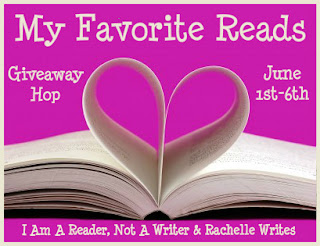NONFICTION MONDAY: Why'd They Wear That by Sarah Albee
ABOUT THE BOOK
From the invention of needles made from woolly mammoth tusks in 10,000 B.C., to the evolution of armor from chain mail to modern-day bulletproof vests, to the controversy surrounding contemporary outsourcing, Albee looks at history through the lens of fashion as a way to engage young readers.
Each chapter focuses on a major period of world history, from the Neolithic era to the present day, and explores the evolution of fashion as a reflection of the politics, class hierarchies, religion and economics of the time. This highly visual collection is full of colorful sidebars that answer questions that are not usually addressed in the classroom: How did people keep their clothes on before zippers or buttons were invented? How did soldiers go to the bathroom when wearing their heavy armor? Pictures, painting and artifacts further illustrate the concepts discussed in each chapter, while funny anecdotes and a focus on cultures of interest, such as the Vikings, will keep even the most reluctant readers hooked.
Snappy headlines, a stylish layout and a foreword by "Project Runway" fan favorite Timm Gunn make this extensive and entertaining guide perfect for both in-depth study and casual browsing. Why'd They Wear That? is ideal for fashionistas, theater aficionados and history buffs of all ages.
ABOUT THE AUTHOR
The New York Times best-selling author Sarah Albee has written more than 100 books for kids, ranging from preschool through middle grade. She enjoys writing about topics where history and science connect including Bugged: How Insects Changed History and Poop Happened: A History of the World from the Bottom Up. When she isn't writing books or visiting schools in person or via Skype, Albee enjoys blogging about offbeat history and contributing to the Interesting Nonfiction for Kids 'Nonfiction Minute'.
REVIEW
The minute I heard about this book I was intrigued. History I've always enjoyed reading, but I've never looked at it through the lens of fashion. I was not disappointed in the least. The book fascinated me with it's look at the fashion choices people have made over time and how those choices were made in the context of the time. It was interesting to know that people's impractical and often painful fashion choices haven't really improved much over the years. The book is divided up by time period with particular fashions from each period highlighted, everything from suits of armor to corsets to bound feet to ruff collars. The author includes side notes about various jobs related to fashion none of which sound particularly enjoyable. It was eye-opening to ponder why people dress the way they do both past and present. While some current fashions seem practical and comfortable, there are just as many uncomfortable even painful fashions that still exist (stiletto heels, anyone?). For readers who enjoy reading about fashion or history I highly recommend this wonderfully fascinating book.
INTERVIEW with Sarah Albee
What lead you to write about this topic?
I love to choose a theme that I think is interesting (and that kids will, too) and trace it chronologically through history. I've always been fascinated by fashion and it's such a naturally compelling topic because it is so visual, and has been so thoroughly chronicled by artists and, later, photographers. And it really is a mirror of history.
What's something you learned that didn't make it into the book?
Oh, so many things! The book could have been three times the length, and it was difficult deciding what to cut and what to keep. I wish we'd had more room to show the evolution of women's athletic wear. There are some amazing photos of female mountain climbers in the late 19th/early 20th century, clambering up mountains in long skirts and corsets.
What's your favorite part about writing nonfiction? least favorite?
It's a really exciting time for nonfiction right now. I love that I can delve into a topic I'm passionate about, and that editors are interested in what I want to write! And more than ever before, we nonfiction writers can use our own voice and write with humor/persuasion/passion. So different from the past when nonfiction voices were expected to be more.. .dispassionate.
My least favorite part of being a nonfiction writer? That's a tough one. I do wish I saw more nonfiction on kid bestseller lists. But pssst! The Revolution is coming!!
What's something about yourself that most people don't know?
I'm a big opera fan. Don't laugh. My husband and kids all love most music, but let's just say they're not opera fans. From time to time I go to the opera by myself, and it brings me huge joy.
What's your favorite thing to wear?
I love clothes, but as a kid's book writer married to a teacher, I can hardly afford high fashion. But I do love shoes! After writing this book, I have definitely changed my buying habits, though. I try to buy way fewer clothes, and before I do buy something I really look at what it's made of, where it was made, and by whom. I try to buy from clothing manufacturers who treat their workers ethically, and sometimes that means the clothing is more expensive. But for those of us who have a choice, I think it's important to understand that cheap clothing comes at a high cost--to the economy, the environment, and to the people who work in the garment industry. Much of the book is about the people who tanned the leather, wove the cloth, dyed the textiles, and picked the cotton. I wanted it to be their story as well as the story of the people who wore these crazy clothes.




Comments
Post a Comment